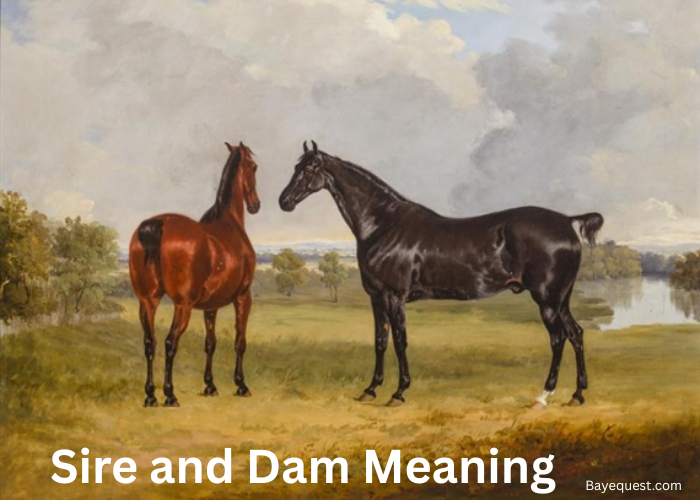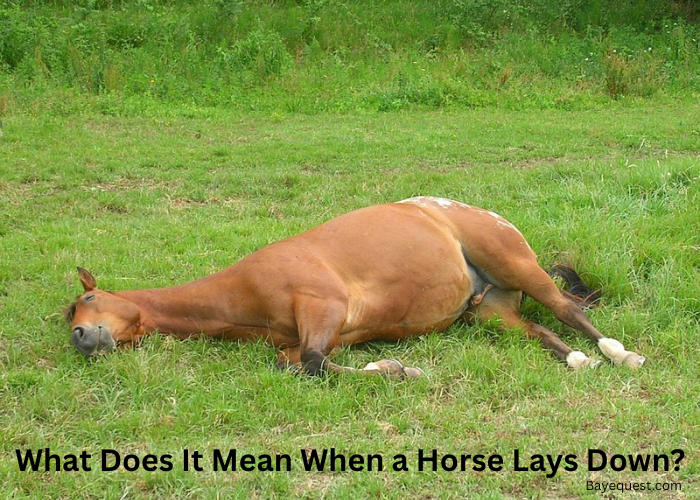Not all horses are built the same, and neither are riders. Whether you’re planning a trail ride or just hopping in the saddle for the first time, there’s one thing you have to consider: weight.
It’s not about judgment, it’s about safety. For you and the horse. Too much weight can lead to injury, pain, or a very cranky four-legged partner.
The good news? There’s a simple rule to follow, and we’re breaking it down for you.
So before you saddle up, let’s talk limits, because a happy horse makes a better ride.
Weight Limit for Horseback Riding: Key Takeaway
Most horses can carry 15–20% of their body weight, including the rider and tack. For example, a 1,000-pound horse should carry no more than 150–200 pounds total. Exceeding this limit can lead to discomfort, injury, and long-term health issues for the horse.
Is There a Weight Limit for Horseback Riding?
Yes, there is a weight limit for horseback, and it’s for a good reason.
Most experts and riding facilities follow the “20% rule,” which means a horse should carry no more than 20% of its own body weight, including the rider and tack.
Therefore, if a horse weighs 1,000 pounds, the safe carrying limit is approximately 200 pounds in total.
This isn’t just a guideline. It protects the horse’s spine, joints, and muscles from strain or injury.
That said, the exact limit can vary based on the horse’s breed, age, fitness, and the type of riding being done. Some sturdy draft breeds can carry more, while lighter breeds may need to carry less.
Professional riding schools, trail operators, and even equestrian competitions may set weight limits between 180–250 pounds, depending on their horses and equipment.
Bottom line: it’s not about exclusion. It’s about keeping the ride safe and enjoyable for both horse and rider.
Why are There Weight Limits for Horseback Riding?
Weight limits exist to protect the health and comfort of the horse. Horses may be strong, but they’re not built to carry just any load.
Their backs are sensitive, and too much weight can cause muscle strain, joint damage, back pain, and long-term injuries.
It’s also about balance. A rider who’s too heavy can throw off the horse’s movement, making it harder to turn, stop, or stay steady, especially on rough trails or during fast maneuvers.
That puts both the horse and rider at risk.
Weight limits also help avoid behavioral issues. A horse in pain might buck, refuse to move, or act out.
Over time, this can lead to stress, burnout, and early retirement.
By adhering to weight limits, we demonstrate respect for the animal. It’s not about body shaming, it’s about keeping horses healthy, willing, and able to do the job we ask of them.
General Guidelines and Industry Standards of Horseback Riding
The most widely accepted rule is the “20% guideline.” This means a horse should carry no more than 20% of its body weight, including the rider, plus the saddle and gear.
So, if your horse weighs 1,200 pounds, the total load should not exceed 240 pounds. That might sound like a lot, but once you factor in the saddle, which can weigh 20 to 40 pounds, it adds up quickly.
Some riding schools, trail companies, and equestrian camps set strict limits between 180–250 pounds. These limits aren’t random; they’re based on research, vet advice, and years of experience.
Certain breeds, like Arabians and ponies, are better suited to lighter loads, while draft horses and mules can safely carry more.
However, no matter the breed, the horse’s age, fitness level, training, and conformation also matter.
The bottom line? Stick to the 20% rule, respect the horse’s limits, and ask for professional guidance when in doubt.
Why Do Some Horse Riding Stables Have a Weight Policy?
It’s all about protecting the horse and ensuring a safe, enjoyable ride for everyone.
Horse riding stables set weight policies to match riders with horses that can comfortably and safely carry them.
Not every horse is built the same. A 900-pound Arabian has very different limits compared to a 1,500-pound draft horse.
These policies help prevent injuries to the horse, such as sore backs, joint strain, or muscle fatigue. They also reduce the risk of accidents for the rider, especially if the horse becomes uncomfortable or unbalanced.
Weight limits also help riding schools manage their horses’ long-term health and working life. A horse that’s constantly overworked won’t stay sound for long.
Plus, it helps stables plan the right tack and match riders with properly trained horses. Most stables don’t mean to exclude.
They want to ensure every rider has a safe and respectful experience. That includes the horse, too.
Factors That Affect Weight Limits
Not all horses, or riders, are the same, which is why weight limits aren’t one-size-fits-all.
Several key factors come into play when determining how much weight a horse can safely carry:
1. Horse’s breed and build
Stocky breeds like Quarter Horses and draft horses tend to handle weight better than light-framed breeds like Arabians or Thoroughbreds.
Bone structure and muscle mass make a big difference.
2. Horse’s age and health
A young horse still growing or an older horse with joint issues shouldn’t carry as much. Age-related conditions, such as arthritis, can reduce weight-carrying capacity.
3. Horse’s fitness level
A well-conditioned horse with strong muscles and good stamina can carry more than a horse that’s out of shape or underworked.
4. Rider’s balance and skill
A well-balanced, experienced rider distributes weight better than a beginner who shifts and bounces. Poor posture can feel heavier to the horse.
5. Type of riding
A slow trail ride isn’t the same as jumping or galloping. High-impact activities demand stricter weight control to avoid injury.
6. Weight and fit of tack
Saddles can weigh 20 to 40 pounds, and poor saddle fit can cause more strain than extra body weight. Tack matters more than people think.
Interesting read: Can You Go Horse Riding Without a Saddle?
What Happens if the Limit is Exceeded
Pushing a horse beyond its safe weight limit can have serious consequences for both the horse and the rider.
1. Physical strain on the horse
Too much weight puts pressure on the horse’s spine, joints, and muscles. This can lead to back pain, swelling, lameness, and even permanent injury.
You might not notice it right away, but over time, the damage adds up.
2. Poor performance and fatigue
An overloaded horse will struggle to move comfortably. It may trip, refuse to trot, or tire quickly.
You may notice it sweating excessively or resisting commands. These are signs of fatigue and discomfort, not bad behavior.
3. Behavioral changes
Pain can cause a horse to become anxious, irritable, or even aggressive. It might start bucking, bolting, or refusing to move, putting the rider in danger.
4. Risk to the rider
If a horse stumbles or reacts to pain, the rider could be thrown off. Balance and control are harder to maintain when the horse is overburdened.
5. Long-term damage
Consistently exceeding limits can shorten a horse’s working life. Some individuals may require prolonged recovery periods or develop chronic conditions that prematurely end their riding careers.
Dangers for a Rider Who is Too Heavy for a Horse
It’s not just the horse that faces risks. Riders can get hurt, too, when weight limits are ignored.
1. Loss of balance and control
When a horse is struggling under too much weight, its movements become unstable. It may stumble, lose rhythm, or sway side to side.
That throws off the rider’s balance, making it harder to stay in the saddle.
2. Higher risk of falls
An overloaded horse is more likely to trip, misstep, or collapse, especially on uneven terrain or during fast-paced riding.
Any of these could lead to the rider falling, and falls from even a small horse can cause serious injury.
3. Limited responsiveness
A horse under strain can become sluggish or resistant. Commands like turning, stopping, or slowing down might get delayed.
This makes it harder for the rider to react promptly, especially during unexpected moments.
4. Safety equipment failure
Tack not rated for heavier loads can break or slip, especially saddles or girths. That can cause the rider to slide off mid-ride.
5. Emotional and confidence setbacks
A rough ride or sudden accident can shake a rider’s confidence and enjoyment. It may lead to avoiding riding altogether, even when better-matched horses are available.
How to Find a Suitable Horse for Each Rider
Finding the right horse isn’t just about looks or speed. It’s about comfort, safety, and the right fit for both horse and rider.
Here’s how to make a smart match:
1. Start with the rider’s weight and height
A horse must carry the rider and the saddle. Use the 20% rule: the total load shouldn’t be more than 20% of the horse’s body weight.
Taller riders may also require a horse with greater height and body length to maintain proper balance.
Read also: Average Jockey Weight and Height.
2. Consider the horse’s breed and build
Some horses are naturally stronger and stockier in build. Breeds like Quarter Horses, Haflingers, and draft crosses tend to carry weight better than slimmer breeds like Arabians or Thoroughbreds.
3. Factor in the horse’s age and fitness
A young or elderly horse might not have the strength or stamina for a heavier rider.
Choose a horse in good condition, with strong muscles and a healthy back.
4. Match temperament and experience
New riders need calm, experienced horses. A nervous rider on a hot-tempered horse is a recipe for stress, or worse.
Make sure both sides of the saddle are ready for each other.
5. Do a test ride
Watch how the horse moves under the rider. Is it balanced? Responsive? Comfortable?
If the horse seems sluggish, stiff, or resistant, it might be struggling with the rider’s size or weight.
6. Get advice from the pros
Barn owners, instructors, and trainers know their horses best. Let them guide you. They’ve seen what works and what doesn’t.
Weight Limit for Horseback Riding: FAQs
Can horses carry more than 20% of their weight?
Most horses can safely carry up to 20% of their body weight, including tack. While some strong, well-conditioned horses may be able to handle slightly more, consistently exceeding this limit increases the risk of injury and fatigue. Sticking to the 20% rule helps protect the horse’s back, joints, and long-term health.
What breeds are best for heavier riders?
Breeds with strong builds and good bone structure are best for heavier riders. These include draft horses like the Percheron, Clydesdale and Shire, as well as sturdy types like the Quarter Horse, Friesian, Haflinger, and Gypsy Vanner. These breeds carry weight better due to their strength, balance, and calm temperament.
Conclusion
Weight limits in horseback riding aren’t about judgment; they’re about safety. Overloading can harm the horse and pose a risk to the rider.
Always match the right horse with the right rider. Follow the 20% rule, consider age and strength, and ride responsibly.
Respecting these limits keeps horses happy, riders safe, and the ride enjoyable for everyone. Now, check out our next article on “horse riding positions” to learn how your posture can make or break the ride.








